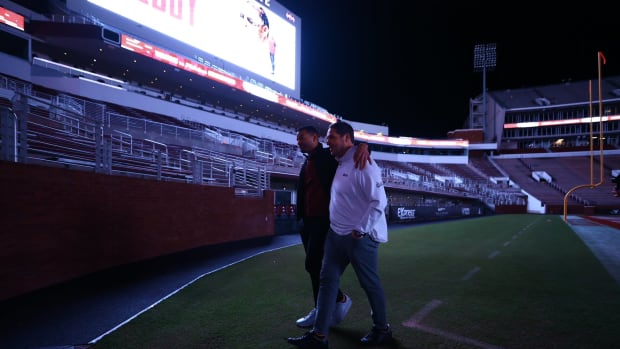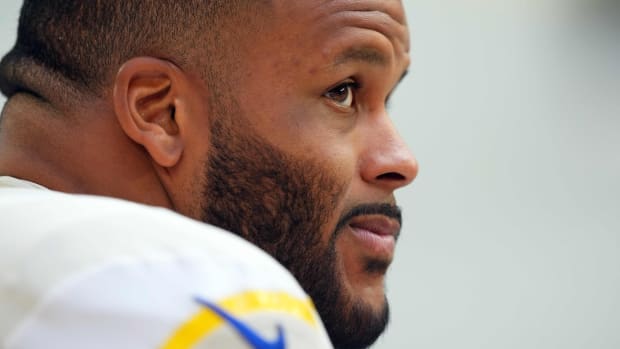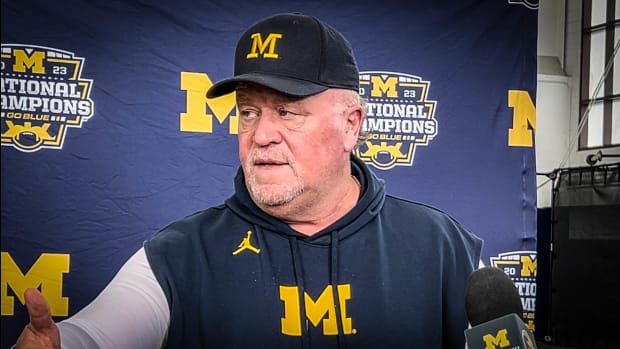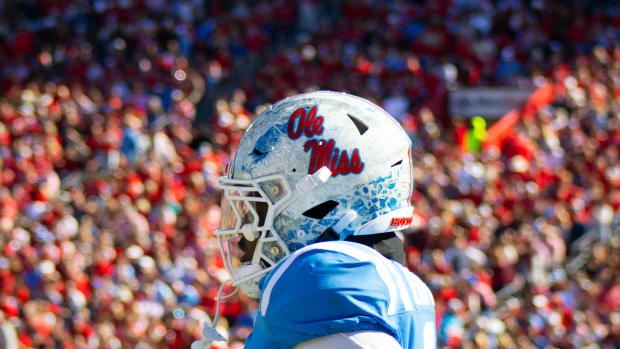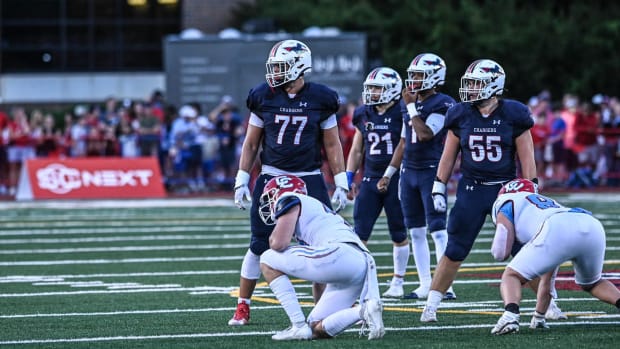Could 'Fair Pay to Play Act' Pave Way Toward End of Amateurism in Collegiate Athletics?
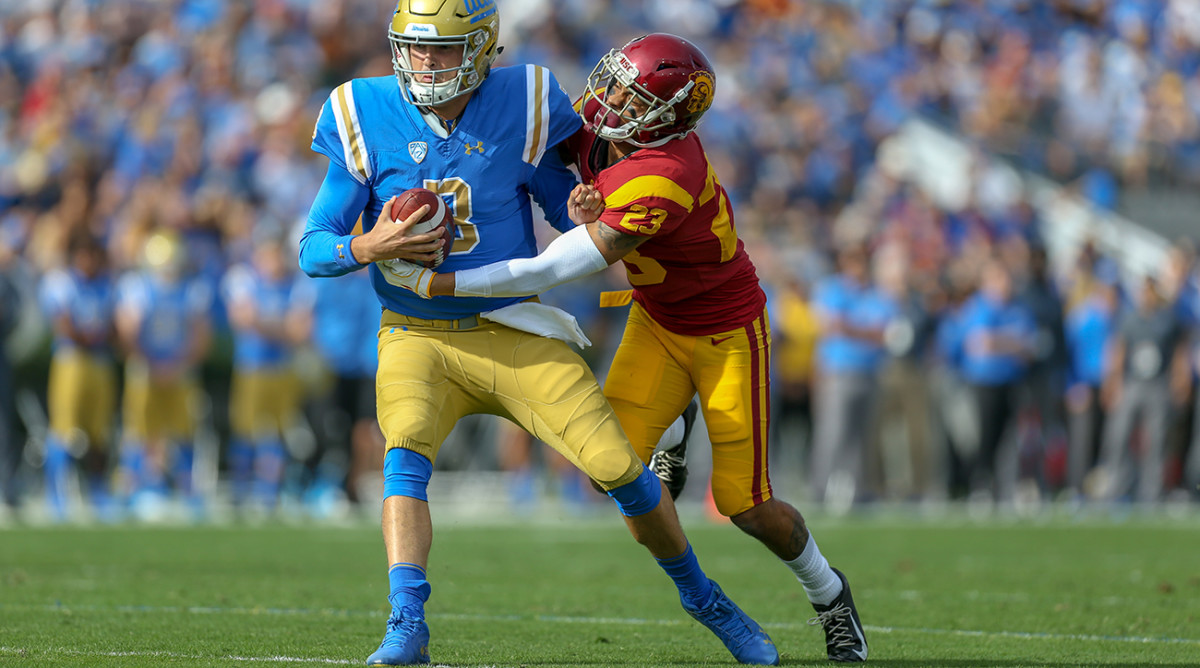
The NCAA’s controversial system of amateurism has mostly withstood everything thrown at it. Trailblazing class action lawsuits, contentious congressional hearings, incessant criticisms from fans and opinion leaders—nothing has fundamentally changed a group of policies that, by forbidding college athletes from receiving compensation outside of their athletic scholarships, distinguishes college athletes from professional athletes.
Could a pair of state senators from California be the ones to take amateurism down?
Senators Nancy Skinner and Steven Bradford hope so, at least with respect to amateurism at California colleges with major athletic programs.
In February, the pair introduced SB-206, titled the “Fair Pay to Play Act.” The act would take effect on Jan. 1, 2023 and, by amending the state’s Education Code, prohibit California colleges that receive an average of $10 million a year in media rights revenue from denying their student-athletes of opportunities to earn compensation derived from the use of their names, images and likenesses. The act would also make it illegal for those colleges to pull or reduce a student-athlete’s scholarship on account of him or her securing compensation for the use of their name, image and likeness. Further, the act contemplates that some college athletes would retain agents and thus requires that any professional representation be from persons licensed by the State of California. In other words, the act would ensure that marketable college athletes could sign endorsement deals and licensing agreements—including for inclusion in video games, advertising campaigns and trading cards—without the risk of their schools punishing them, and with the counsel and advice of seasoned agents.
The act, therefore, would essentially codify former UCLA basketball star Ed O’Bannon’s courtroom victory against the NCAA five years ago. O’Bannon proved that the NCAA and its member schools and conferences had illegally conspired through amateurism rules to misappropriate players’ names, images and likenesses in commercial products. O’Bannon showed that the NCAA and video game publisher Electronic Arts had collaborated on development of college basketball and college football video games that sold for $60 and that brazenly used the likenesses of college players, without their permission and without paying them.
In her decision in favor of O’Bannon, U.S. District Judge Claudia Wilken ruled that colleges would be required to credit men’s basketball and football players for up to $5,000 per year for the commercial use of their names, images and likenesses. These monies would have been placed in trust accounts and paid to players after they graduated or left college. On appeal, the U.S. Court of Appeals for the Ninth Circuit vacated the trust fund approach and ruled instead that the NCAA would comply with Judge Wilken’s ruling by allowing schools to provide up to the cost of attendance.
Through direct and indirect means, O’Bannon’s case benefited college athletes in other ways. Most notably, O’Bannon reached an out-of-court settlement with EA for the video game publisher to pay roughly $40 million to more than 29,000 current and former players whose likenesses appeared in EA-published video games. Each of these athletes received up to $7,200, depending on how many video games they appeared in and the extent to which their avatars were designed to reflect their unique identities. O’Bannon’s case also pressured the NCAA into allowing colleges to offer athletes up to the full cost of attendance, which translates into an annual stipend of roughly $3,000 to $6,000 and which eventually became the remedy for O’Bannon’s case. Pressure built by the O’Bannon case also led the NCAA to permitting athletes to enjoy unlimited access to snacks and meal plans as well as the ability to borrow against future earnings when buying loss-of-value insurance.
Further, the O’Bannon decision was relied upon by Judge Wilken in her recent ruling in the Alston v. NCAA case. Although the Alston ruling is subject to appellate review by the U.S. Court of Appeals for the Ninth Circuit, Judge Wilken has permanently restrained the NCAA and its member schools and conferences from agreeing to limit education benefits related to certain aspects of academic studies. Those aspects include fees for computers, science equipment, musical instruments and “other tangible items” that go beyond the full cost of attendance. Judge Wilken’s order is designed to ensure that recruits and college athletes gain more in athletic scholarships from the intercollegiate competition for their enrollment.
Senators Skinner and Bradford’s Fair Pay to Play Act builds on these developments but goes a step further, attempting to land a knockout blow to the historical understanding of amateurism.
The Fair Pay to Play Act would make it illegal for NCAA member schools in California to punish athletes for earning off of their names, images and likenesses. This is a potentially profound outcome. If the NCAA were barred from conditioning amateur status in California on college athletes refraining from taking compensation for the value of their identity, the NCAA would either need to create separate sets of rules for California member schools and other states’ members or simply let college athletes in all states reap the benefits bestowed to those in California.
The Fair Pay to Play Act seems to have momentum in the California State Legislature. On Wednesday, the bill passed the California Senate by a decisive vote of 31 to 5. While the five “no” votes were all Republicans, several other Republican senators voted “aye,” which suggests the bill has bipartisan support. The bill will now be considered by the California Assembly, which has 61 Democrats and 19 Republicans. If it passes there, the bill would head to California Governor Gavin Newsom, who is a Democrat, for his signature. The trajectory of the bill is thus favorable. It appears the NCAA has not aggressively lobbied against the bill, or if such lobbying has occurred, it hasn’t (yet) been very persuasive.
With the NCAA contemplating potential changes to amateurism rules, the proposed legislation might prove unnecessary by 2023
The fact that the Fair Pay to Play Act would not go into effect until 2023 is an important contextual point.
Earlier this month, the NCAA announced that it has convened a working group, led by Big East Commissioner Val Ackerman and Ohio State athletic director Gene Smith, to review the NCAA’s policies on name, image and likeness rights. The working group will likewise explore potential proposals that might permit college athletes to receive compensation for the use of those rights.
The NCAA stresses that the working group, which also includes Georgetown president Jack DeGioia and Big 12 commissioner Bob Bowlsby, will not consider compensation for athletes related to their labor or any payment system that might be construed as “pay-for-play.” Instead, proposals will likely embrace the core argument of O’Bannon: Let college athletes gain from the commercial use of their name, image and likeness, just like every American has the right to do.
To that end, it would not be surprising if the working group lands on a concept similar to the one outlined by Judge Wilken in her O’Bannon ruling. Judge Wilken, as detailed above, envisioned a system of trusts whereby college athletes would be credited monies for the commercial use of their names, images and likenesses. The athletes could access those trusts after they graduate or otherwise leave college. Stated differently, while college athletes wouldn’t be paid for the use of their identity rights while they are in school, they would still earn from that use and be able to access those earnings after their time in college ends.
As Andy Staples recently wrote, the NCAA has made exceptions to permit college athletes who are also Olympic athletes to receive compensation for their unique talents. Within certain parameters, those athletes can keep their stipends and prize money without running afoul of NCAA compliance rules. It’s possible the NCAA could adopt a similar approach with respect to other college athletes and their ability to profit from the characteristics that make them marketable.
The NCAA might also be moved by the fact that many college athletes who would benefit from being able to sign endorsement deals are not those who will later earn millions of dollars in the NBA and NFL. Elite female athletes, for example, will not have the same lucrative earning opportunities when they turn pro. Take female basketball players. While the average NBA salary is $7.8 million, the average WNBA salary last season was $116,000—a relatively high salary when compared to the American workforce in general, but not when compared to NBA players. Their ability to sign endorsement deals and licensing contracts without jeopardizing their NCAA eligibility could prove valuable and, many would argue, morally fair.
Similarly, men and women college athletes who excel at swimming, track and other sports that lack robust pro leagues might benefit greatly by the ability to sign endorsement deals while they are in school—and while they are marketable to the public. For many of them, their window to profit from their unique talents is limited to their time in college. After college ends, they tend to take paths similar to their classmates: pursue jobs or enroll in graduate school.
The NCAA is also aware that if it doesn’t change amateurism rules voluntarily, it may be forced to do so by law. The Fair Pay to Play Act is just one of several legislative proposals under consideration across the country. Most notably, Congressman Mark Walker (R., N.C.) and Congressman Cedric Richmond (D., La.) recently introduced House Resolution 1804. This resolution is titled the “Student-Athlete Equity Act” (Equity Act).
The Equity Act is currently under review by the House Ways and Means Committee. If it became law, the Equity Act would alter the U.S. Tax Code to tie the NCAA’s eligibility as a non-profit to the NCAA making a major change: permitting college athletes to sign endorsement deals and other contracts for the commercial use of names, images and likenesses. Meanwhile, U.S. Senator Chris Murphy has closely examined NCAA amateurism rules and has repeatedly voiced a number of concerns—particularly with respect to the fact that college athletes are always one play away from a career-ending injury.
While the concept of colleges paying their student athletes as employees remains controversial—and would raise a separate set of Title IX issues particularly if colleges paid men and women players at disparate rates—the very different concept of colleges letting their student athletes sign endorsement deals with third parties has much more support. The Fair Pay to Play Act, the Equity Act and similar legislative models that embrace the arguments of O’Bannon are neither about converting college athletes into employees nor forcing colleges to pay their student athletes. Instead, they are about letting college athletes access the same rights as other Americans for the use of names, images and likenesses.
If the NCAA doesn’t change amateurism rules, how would the act be implemented?
If the Fair Pay to Play Act became law and if the NCAA doesn’t modify its amateurism rules to permit college athletes to sign endorsement deals and enter into licensing contracts, the act would compel NCAA member schools in California to permit their student-athletes to profit from the commercial use of their names, images and likenesses.
In theory, such a dynamic would greatly advantage California schools for purposes of recruiting. UCLA basketball players, USC football players and Stanford swimmers could sign endorsement deals and, per the Fair Pay to Play Act, their schools would be forbidden from stripping them of eligibility. If those same players instead elected to attend colleges in other states, they would be unable to sign endorsement deals. This dynamic would make the California schools much more attractive when recruiting high school athletes, especially elite high school athletes who are highly marketable.
In reality, the NCAA would likely find this bifurcated arrangement to be untenable. A core mission of NCAA rules is to ensure that all member schools operate under a common set of rights and obligations. The fact that every member must adhere to those rules is intended to create a level playing field. No, that doesn’t mean Alabama’s recruitment of high school football players isn’t advantaged by the prestige of the Crimson Tide football program, but it means Alabama and every other member school follows one set of rules.
Yet the NCAA also realizes that California colleges would face an unenviable choice: comply with state law and defy NCAA rules, or violate state law and adhere to NCAA rules. It seems unlikely that the NCAA would terminate the memberships of California colleges on account of following state law. After all, the NCAA profits considerably by having member schools in the state with the highest GDP and largest population.
For that same reason, the Pac-12 conference is unlikely to expel UCLA, USC, Stanford and Cal. These California universities have the economic wherewithal and national profiles to form their own collegiate sports league, with rules that adhere to California law. The NCAA would not want to see the formation of a California college sports league, particularly since if it were to succeed, the other four power conferences might reason that they too could break away from the NCAA and flourish without NCAA oversight.
To prevent these outcomes, the NCAA (through member California schools) would likely challenge the Fair Pay to Play Act in court. One potential legal argument would be to insist that the act is unconstitutional on account of unduly interfering with interstate commerce.
Article I, Section 8 of the U.S. Constitution empowers Congress, not the states, with the authority to regulate interstate commerce. The act would clearly impact interstate commerce. NCAA member colleges that are subject to the act would be unable to satisfy the contractual obligations of their NCAA membership. The NCAA could thus expel those schools (although that may be unlikely as explained above) or simply not let those schools compete in other states. Accordingly, there would be economic consequences that cross state lines in terms of ticket sales, revenue distribution, broadcasting and streaming rights and other critical aspects of the economy for intercollegiate sports.
California colleges and their administrators might also assert due process arguments under federal and state law. Generally speaking, the 14th Amendment to the U.S. Constitution and Section 1 of the California Constitution prohibit government entities from taking away “life, liberty, or property” unless due process of law is provided. A university president might argue that the Fair Pay to Play Act was passed without proper consultation with university leaders as to how it would potentially disrupt their NCAA membership agreements and the accompanying impact on the education of student-athletes. Further, a private university president could contend that imposing such public requirements on private universities exceeds governmental authority.
In response to these types of arguments, the State of California would likely stress that (in its view) the Fair Pay to Play Act is necessary to ensure basic fairness in intercollegiate sports. The text of the bill, in fact, details reasons why the Act is arguably needed. This text draws heavily on a 2012 study titled “The $6 Billion Heist,” which was authored by National College Players Association president Ramogi Huma and Drexel University professor Ellen Staurowsky, and a 2014 study by the College Sport Research Institute, which is directed by University of South Carolina professor Richard Southall. Here are several points raised in the bill:
•As of 2011, the average annual scholarship shortfall for full scholarship FBS players as a result of out-of-pocket expenses was $3,825.
• As of 2011, more than 80% of full scholarship football and men’s basketball players lived at or below the federal poverty level.
• As of 2011, the “fair market value of the labor of the average FBS football and men’s basketball player was approximately $137,357 and $289,829, respectively.”
• As of 2014, revenue-producing male athletes graduate at a rate of 17.5 percentage points below other male students.
• The current landscape for college sports in California adversely impacts African- American students in disproportionate ways. The bill stresses that “California’s African American college athletes are overrepresented in revenue producing sports and suffer the lowest graduation rates.”
• Senators Skinner and Bradford maintain that college athletes need skilled representation since they “face repercussions for obtaining legal representation to protect their academic, physical, and financial well-being.”
Michael McCann is SI’s Legal Analyst. He is also an attorney and Associate Dean of UNH Franklin Pierce School of Law. McCann and Ed O’Bannon co-authored Court Justice: The Inside Story of My Battle Against the NCAA.

